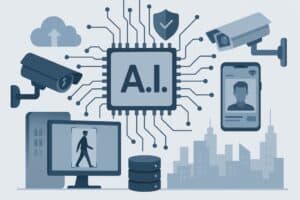Key Takeaways
- Modern surveillance now integrates AI-driven analytics, cloud architectures, and multi-sensor data to provide proactive, scalable, and intelligent security solutions.
- Artificial intelligence transforms raw video into actionable insight, supporting immediate threat response and long-term operational improvement.
- Cloud-based storage and remote platform management have unlocked new possibilities for flexible expansion, reliable backup, and seamless integration with mobile teams.
- Today’s surveillance adds value beyond safety—it enhances regulatory compliance, efficiency, and even customer experience across diverse industries.
- Privacy and ethics are more crucial than ever. Every smart security plan should incorporate transparent practices, regulatory compliance, and scalable investments.
Table of Contents
- The Changing Landscape of Surveillance
- The Role of Artificial Intelligence in Monitoring
- Cloud Connectivity and Remote Access
- Integration with Other Security Systems
- Data Privacy and Ethical Considerations
- Costs and Scaling Considerations
- Real-World Applications of Next-Gen Surveillance
- Future Outlook: Where Is Smart Security Headed?
As our world becomes increasingly connected, the need for smarter, more adaptable security solutions has never been greater. Traditional surveillance systems are evolving rapidly, driven by advancements in artificial intelligence, cloud computing, and the Internet of Things (IoT). Today’s modern surveillance tools offer more than just recording footage—they provide real-time analytics, remote access, facial recognition, and predictive threat detection. These innovations reshape how businesses, homeowners, and public spaces approach safety in the digital age.
The Changing Landscape of Surveillance
The surveillance sector has shifted remarkably over the past decade, moving well beyond grainy security tapes and sporadic camera checks. Today, organizations recognize that vigilance requires far more than simply recording incidents—it demands the ability to predict, deter, and respond with speed and intelligence. The rise of cutting-edge surveillance solutions reflects a need to keep up with a world that is more interconnected, dynamic, and prone to emerging risks than ever before. These solutions unify video feeds, environmental and access sensors, and advanced analytics into cohesive platforms. The result is a multi-dimensional, responsive system that protects against external threats and supports safer, more efficient, and more transparent work environments.
As cities expand, smart buildings proliferate, and workplace logistics grow more intricate, the pressure to safeguard people, assets, and reputations has only intensified. According to global market research, investment in professional surveillance technology has rocketed in recent years—surpassing US$20 billion in 2022. Leaders in every industry now see modern surveillance as a strategic asset. It’s not just about deterring crime—today, surveillance delivers data for safety, compliance, process improvement, and crisis response, taking on an essential role as both a shield and a driving force for smart operations.
The Role of Artificial Intelligence in Monitoring
Artificial intelligence has revolutionized how security teams monitor, analyze, and act. Powerful AI engines continuously review streams of live footage and sensor data, looking for irregularities that human eyes would easily miss—whether it’s someone lingering too long by a restricted door, a sudden buildup of people in once-quiet aisles, or a high-value package being handled after hours. In crowded venues or vast facilities, no human could match this vigilance. However, with AI at the helm, genuine risks are isolated and escalated to human operators instantly, drastically cutting down on false alarms and missed threats.
Even more transformative is that AI’s reach extends well beyond security. Retail chains use it to understand shopper movements and optimize store layouts or staffing levels. Healthcare sites use AI analytics to protect patients with mobility risks or flag unauthorized medication access. Manufacturing facilities, warehouses, and urban transit hubs rely on facial recognition, license plate analysis, and behavioral patterning to support compliance, efficiency, and safety all at once. As the technology learns and adapts, AI-driven surveillance becomes less of a static asset and more of a smart partner, able to respond to each site’s unique tempo and threats.
Cloud Connectivity and Remote Access
Cloud adoption has fundamentally changed the management of security infrastructure and video data. No longer is footage tied to on-site recorders that risk being damaged or tampered with. Instead, high-definition video and sensor logs are encrypted and transmitted to remote, highly available, tightly controlled servers. This shift enables security managers, executives, or law enforcement partners to access real-time and historical feeds from anywhere using secure logins—whether at a central command center, in the field, or working from home.
The cloud’s real power lies in its scalability and operational simplicity. Organizations are quickly turning to cloud-first or hybrid architectures. This approach allows new cameras, sensors, or analytic modules to be rolled out and integrated company-wide with minimal IT effort or cost. Automated updates, built-in disaster recovery, and compliance tools ensure uptime and reliability for mission-critical surveillance systems, making advanced security available to large and small businesses and supporting adaptation to rapidly changing needs.
Integration with Other Security Systems
True smart surveillance doesn’t stand alone—it actively collaborates with other digital and physical building systems for layered defense. Imagine an after-hours breach: when an exterior door is forced, the platform can trigger targeted video recording, send instant alerts to managers’ phones, lock adjacent entry points, and boost lighting along escape routes. The synergy of integrated alarms, smart access controls, and surveillance cameras produces far richer situational awareness and more decisive incident response.
Integration goes further than crisis management. Organizations now leverage occupancy analytics to auto-adjust HVAC or lighting, saving energy while maintaining comfort. In healthcare, surveillance collaborates with electronic badge-in logs to audit restricted access and support compliance. Open APIs and modular architectures allow organizations to tailor these integrations to their needs, ensuring every investment brings multiple business benefits, not just greater security.
Data Privacy and Ethical Considerations
As technology sharpens its lens, organizations must sharpen their ethical focus. Regulations underpin the need for transparency and purpose-driven surveillance. People expect to know when and why they are recorded—clear signage, explicit policies, and exacting user controls are simply essential. Data should be encrypted at rest and in transit, accessible strictly on a need-to-know basis, and stored only for the minimum period required by law or policy.
The ethical dimension of surveillance also encompasses advanced features like facial or behavioral analytics. Responsible leaders go beyond compliance, regularly auditing their systems, sharing findings with stakeholders, and adjusting technology to address feedback and evolving community standards. Ultimately, organizations championing transparency and ethics create environments where people feel safer and more respected, and where innovation flourishes without jeopardizing trust.
Costs and Scaling Considerations
Investing in advanced surveillance no longer means heavy sunk costs followed by long periods of stagnation. Cloud-based and modular subscription models now allow organizations to start small, scale gradually, and budget predictably. Core security coverage can be rolled out to the most critical areas first; as risk profiles or regulations shift, additional features and locations can be brought online with minimal interruption or learning curve.
Smart planning also means demanding flexibility and longevity. Choosing interoperable, open-architecture systems reduces the danger of vendor lock-in and supports integration with new solutions—be it analytics, sensors, or automation tools—as the organization’s needs expand. In this way, forward-thinking leaders future-proof their investments, ensuring robust protection and return on investment as external and internal environments evolve.
Real-World Applications of Next-Gen Surveillance
New-generation surveillance solutions are driving positive change across industries. In healthcare, they play pivotal roles in preventing patient elopement, auditing drug access, and documenting staff interactions with vulnerable individuals. Logistics companies use AI-powered cameras and analytics to manage vehicle flows, optimize warehouse layouts, and maintain inventory security. Retailers seamlessly unite anti-theft systems, customer tracking, and real-time feedback to improve shopping experiences for everyone involved.
On a broader scale, metropolitan governments deploy massive, integrated camera and sensor networks to support disaster response, public event coordination, and traffic management. Security professionals gain better control over sprawling public spaces, while citizens benefit from tangible increases in safety and quality of urban life. Surveillance now actively drives business results, public confidence, and a culture of vigilance that reaches from front doors to city centers.
Future Outlook: Where Is Smart Security Headed?
As smart cities and buildings become mainstream, the trajectory of surveillance points toward greater unification of data streams and real-time automation. Sophisticated AI, edge-based analytics, IoT integration, and self-learning technology will help organizations recognize emerging risks, automate compliance, and create responsive environments that are efficient and sustainable as well as safe.
Open communication and ethical foresight will set the tone for this future. Clear protocols, regular audits, and community input—backed by guidelines like the federal smart city fact sheet—will distinguish organizations whose smart surveillance truly serves people and progress. With the right approach, the digital transformation of security will deliver peace of mind and smarter, friendlier, and more adaptable spaces for years to come. As surveillance becomes more predictive and less reactive, privacy by design must be a foundational principle. Collaboration between tech developers, policymakers, and the public will be essential to ensure transparency and trust. Moreover, scalable platforms will allow large cities and smaller communities to adopt intelligent security at their own pace. Ultimately, smart surveillance will evolve to protect and empower safer, more connected lives.





